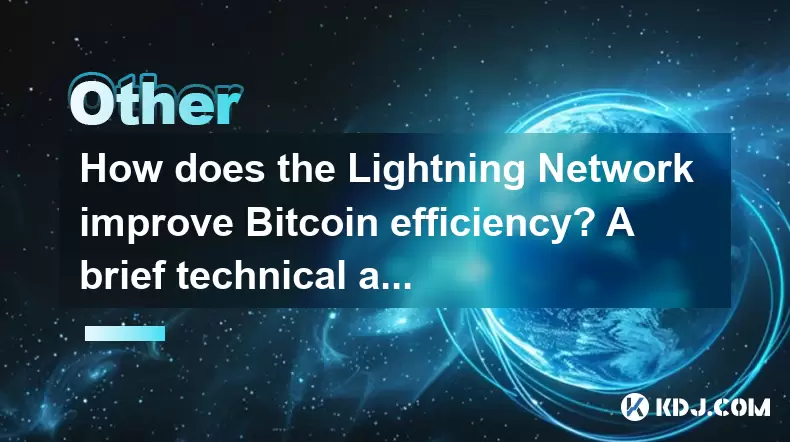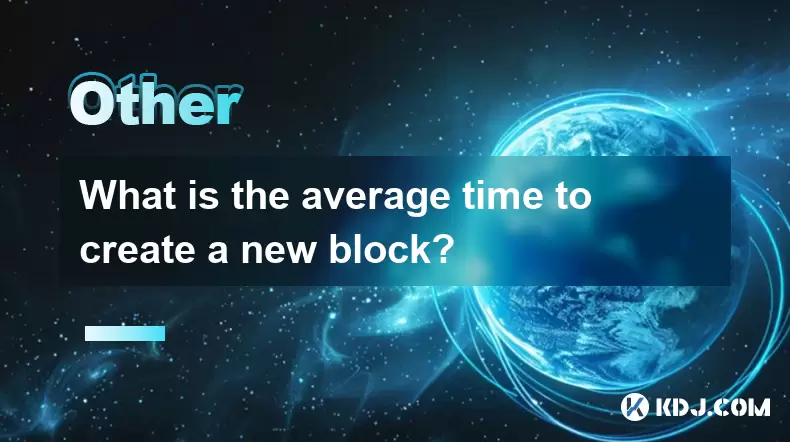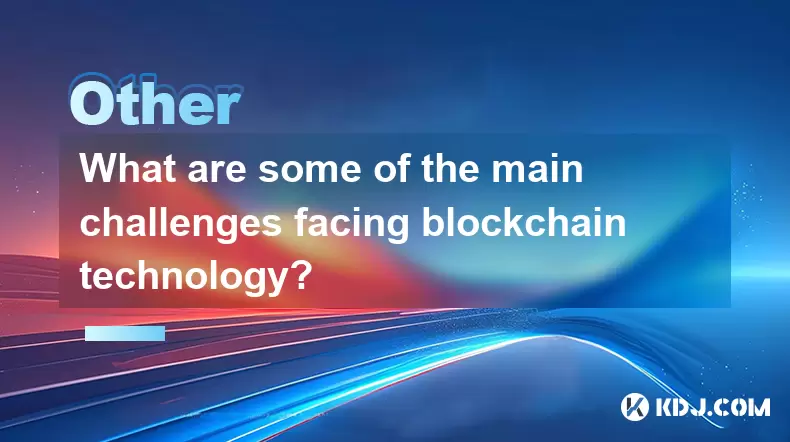-
 Bitcoin
Bitcoin $117500
2.15% -
 Ethereum
Ethereum $3911
6.19% -
 XRP
XRP $3.316
10.79% -
 Tether USDt
Tether USDt $1.000
0.01% -
 BNB
BNB $787.2
2.24% -
 Solana
Solana $175.2
4.15% -
 USDC
USDC $0.9999
0.00% -
 Dogecoin
Dogecoin $0.2225
8.40% -
 TRON
TRON $0.3383
0.28% -
 Cardano
Cardano $0.7868
6.02% -
 Stellar
Stellar $0.4382
9.34% -
 Hyperliquid
Hyperliquid $40.92
7.56% -
 Sui
Sui $3.764
7.63% -
 Chainlink
Chainlink $18.48
10.66% -
 Bitcoin Cash
Bitcoin Cash $582.1
1.88% -
 Hedera
Hedera $0.2601
6.30% -
 Avalanche
Avalanche $23.33
4.94% -
 Ethena USDe
Ethena USDe $1.001
0.02% -
 Litecoin
Litecoin $122.3
2.04% -
 UNUS SED LEO
UNUS SED LEO $8.969
-0.27% -
 Toncoin
Toncoin $3.339
0.86% -
 Shiba Inu
Shiba Inu $0.00001287
4.30% -
 Uniswap
Uniswap $10.43
7.38% -
 Polkadot
Polkadot $3.861
5.08% -
 Dai
Dai $1.000
0.02% -
 Bitget Token
Bitget Token $4.513
3.41% -
 Monero
Monero $267.7
-6.18% -
 Cronos
Cronos $0.1499
4.14% -
 Pepe
Pepe $0.00001110
5.15% -
 Aave
Aave $284.9
8.28%
How does the Lightning Network improve Bitcoin efficiency? A brief technical analysis
The Lightning Network solves Bitcoin's scalability issues by enabling fast, low-cost off-chain transactions through bidirectional payment channels.
Jun 21, 2025 at 04:36 am

Understanding the Bitcoin Scalability Problem
Bitcoin, while revolutionary in terms of decentralized finance and peer-to-peer transactions, faces a fundamental scalability issue. The blockchain's limited block size and slow confirmation times hinder its ability to handle large volumes of transactions efficiently. Each block is mined approximately every 10 minutes, with a capacity that allows for only a few thousand transactions per block. This constraint leads to high transaction fees during peak usage and longer wait times, making it unsuitable for everyday microtransactions.
The Lightning Network was introduced as a second-layer solution to address these bottlenecks without altering the core Bitcoin protocol. It enables off-chain transactions between parties, reducing the load on the main blockchain. By doing so, it enhances transaction speed, lowers costs, and improves scalability, all while maintaining the security guarantees of the Bitcoin network.
What Is the Lightning Network?
The Lightning Network operates by creating bidirectional payment channels between users. These channels are funded by locking up a certain amount of Bitcoin (BTC) in a multisignature wallet controlled by both participants. Once this channel is established, users can transact any number of times off-chain, updating their balances without broadcasting each transaction to the main blockchain.
These transactions are secured through Hashed Time-Locked Contracts (HTLCs), which ensure that payments can be routed securely across multiple nodes even if not directly connected. When the parties involved decide to close the channel, only the final balance is settled on the Bitcoin blockchain, drastically reducing the number of transactions recorded on-chain.
How Does the Lightning Network Improve Transaction Speed?
Traditional Bitcoin transactions require at least one confirmation (and often more) before being considered secure, which can take several minutes or longer depending on network congestion. In contrast, the Lightning Network facilitates near-instantaneous transfers because they occur off-chain and do not rely on block confirmations.
This efficiency stems from the fact that once a payment channel is open, users can send and receive funds instantly, with zero confirmation time required. For merchants and consumers alike, this means real-time payments can be executed without waiting for miners to validate them. Additionally, multi-hop routing allows payments to traverse several interconnected channels, enabling users to transact with others they don’t have a direct channel with, further enhancing usability.
- Create a Lightning node using compatible software like LND, c-lightning, or Eclair.
- Fund a multisig wallet with Bitcoin to open a payment channel.
- Establish connections with other nodes to route payments.
- Transact freely within the channel limits without touching the main chain.
- Close the channel when done, publishing the final state to the blockchain.
Reducing Transaction Costs with Off-Chain Payments
On the Bitcoin network, fees are determined by supply and demand for block space. During periods of high activity, fees can spike dramatically, sometimes reaching tens of dollars per transaction. The Lightning Network mitigates this issue by conducting transactions outside the blockchain, where no miner fees are involved.
Instead of paying per transaction, users pay a small fee (if any) for opening and closing a channel. Within the channel, thousands of transactions can occur with negligible cost. This makes the Lightning Network particularly attractive for micropayments, such as tipping content creators, buying coffee, or streaming payments based on time or service usage.
Moreover, routing fees for multi-hop payments are typically minimal and set by individual node operators. These fees are competitive due to the open nature of the network, encouraging efficient routing paths and fostering a decentralized ecosystem of service providers.
Enhancing Privacy and Security Through Smart Contracts
Despite operating off-chain, the Lightning Network does not compromise on security. All transactions are protected by smart contracts written in Bitcoin Script, ensuring that funds cannot be stolen or manipulated. If a participant attempts to cheat by broadcasting an outdated channel state, the counterparty has a window to challenge and reclaim their rightful balance via a penalty transaction.
Privacy is also improved since most transactions are not publicly visible on the blockchain. Only the initial funding and final settlement transactions appear on-chain, obscuring the details of intermediate transfers from public scrutiny. This feature makes Lightning a compelling option for users who value financial privacy while still benefiting from the transparency and immutability of Bitcoin.
Frequently Asked Questions
Q: Can I use the Lightning Network without running my own node?
A: Yes, you can access the Lightning Network through custodial wallets or hosted services that manage nodes on your behalf. However, running your own node provides greater control, privacy, and the ability to earn routing fees.
Q: Are Lightning Network transactions reversible?
A: No, Lightning transactions are designed to be irreversible once confirmed within the channel. This ensures the integrity and finality of payments, similar to on-chain Bitcoin transactions.
Q: What happens if my Lightning node goes offline?
A: If your node disconnects temporarily, your funds remain safe. However, prolonged downtime may result in missed challenges against fraudulent claims or loss of routing opportunities. It’s advisable to maintain uptime for active participation.
Q: How much Bitcoin do I need to open a Lightning channel?
A: There is no minimum requirement, but practical usage usually involves at least a few thousand satoshis. Opening a channel requires a small on-chain transaction, so users must consider dust limits and fee costs when determining the channel size.
Disclaimer:info@kdj.com
The information provided is not trading advice. kdj.com does not assume any responsibility for any investments made based on the information provided in this article. Cryptocurrencies are highly volatile and it is highly recommended that you invest with caution after thorough research!
If you believe that the content used on this website infringes your copyright, please contact us immediately (info@kdj.com) and we will delete it promptly.
- FTT Token's Wild Ride: Creditor Repayments vs. Market Drop - A New Yorker's Take
- 2025-08-08 07:10:12
- Floki Crypto Price Prediction: Riding the Robinhood Rocket or Just a Meme?
- 2025-08-08 07:15:12
- EigenLayer, Restaking, and Ethereum: Navigating the Hype and the Hazards
- 2025-08-08 06:30:12
- Super Bowl 59: Jon Batiste to Jazz Up the National Anthem
- 2025-08-08 06:30:12
- Cold Wallet Crypto in 2025: The Future is Now, Ya'll
- 2025-08-08 05:10:13
- MAGACOIN, SOL, and ADA: A Tale of Shifting Tides in Crypto
- 2025-08-08 05:10:13
Related knowledge

What is the purpose of a nonce in mining?
Aug 04,2025 at 05:56pm
Understanding the Role of a Nonce in Cryptocurrency MiningIn the world of cryptocurrency mining, the term nonce stands for 'number used only once.' Th...

Can data on a blockchain be deleted?
Aug 05,2025 at 04:00am
Understanding Blockchain ImmutabilityThe core principle behind most blockchain systems is immutability, which means that once data is recorded onto th...

What is the difference between on-chain and off-chain transactions?
Aug 02,2025 at 04:22pm
Understanding On-Chain TransactionsOn-chain transactions refer to digital asset transfers that are recorded directly on a blockchain ledger. These tra...

What is the average time to create a new block?
Aug 06,2025 at 09:21pm
Understanding Block Creation in Blockchain NetworksThe average time to create a new block varies significantly depending on the specific blockchain pr...

How are blocks linked together?
Aug 04,2025 at 06:56am
Understanding the Structure of a BlockchainA blockchain is a decentralized digital ledger composed of a sequence of blocks, each containing a list of ...

What are some of the main challenges facing blockchain technology?
Aug 07,2025 at 02:58am
Scalability Constraints in Blockchain NetworksOne of the most persistent challenges in blockchain technology is scalability. As blockchain networks gr...

What is the purpose of a nonce in mining?
Aug 04,2025 at 05:56pm
Understanding the Role of a Nonce in Cryptocurrency MiningIn the world of cryptocurrency mining, the term nonce stands for 'number used only once.' Th...

Can data on a blockchain be deleted?
Aug 05,2025 at 04:00am
Understanding Blockchain ImmutabilityThe core principle behind most blockchain systems is immutability, which means that once data is recorded onto th...

What is the difference between on-chain and off-chain transactions?
Aug 02,2025 at 04:22pm
Understanding On-Chain TransactionsOn-chain transactions refer to digital asset transfers that are recorded directly on a blockchain ledger. These tra...

What is the average time to create a new block?
Aug 06,2025 at 09:21pm
Understanding Block Creation in Blockchain NetworksThe average time to create a new block varies significantly depending on the specific blockchain pr...

How are blocks linked together?
Aug 04,2025 at 06:56am
Understanding the Structure of a BlockchainA blockchain is a decentralized digital ledger composed of a sequence of blocks, each containing a list of ...

What are some of the main challenges facing blockchain technology?
Aug 07,2025 at 02:58am
Scalability Constraints in Blockchain NetworksOne of the most persistent challenges in blockchain technology is scalability. As blockchain networks gr...
See all articles

























































































